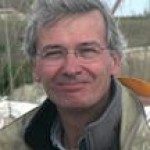Link to Pubmed [PMID] – 15916611
Mol. Microbiol. 2005 Jun;56(6):1627-35
Bacteria of Shigella spp. are responsible for shigellosis in humans and use a type III secretion (TTS) system to enter epithelial cells and trigger apoptosis in macrophages. Transit of translocator and effector proteins through the TTS apparatus is activated upon contact of bacteria with host cells. Transcription of approximately 15 genes encoding effectors is regulated by the TTS apparatus activity and controlled by MxiE, an AraC family activator, and its coactivator IpgC, the chaperone of IpaB and IpaC translocators. Using a genetic screen, we identified ospD1 as a gene whose product negatively controls expression of genes regulated by secretion activity. OspD1 associates with the chaperone Spa15 and the activator MxiE and acts as an anti-activator until it is secreted. The mechanism regulating transcription in response to secretion activity involves an activator (MxiE), an anti-activator (OspD1), a co-anti-activator (Spa15), a coactivator (IpgC) and two anti-coactivators (IpaB and IpaC) whose alternative and mutually exclusive interactions are controlled by the duration of the TTS apparatus activity.

